What Animals Eat Baboons? – (List of 7 Natural Predators of Baboons)
- What eat Baboons? – Here is the list of 7 Natural Predators of Baboons
- 1. Leopards: They do basically hunt baboons at nighttime
- 2. Lions: They can be mostly seen hunting during the daytime
- 3. Spotted & Striped Hyenas: They mostly hunt in groups
- 4. Humans: They go for hunting at nightime with tools like poisoned bows and arrows
- 5. Cheetahs: They run after baboon in an incredibly fast pursuit and kill it
- 6. Nile Crocodiles: The apex hunters of freshwater habitats in Africa
- 7. Snakes like Black Mamba, African Rock Python, etc.
- Why are young and juvenile baboons mostly preyed on by predators?
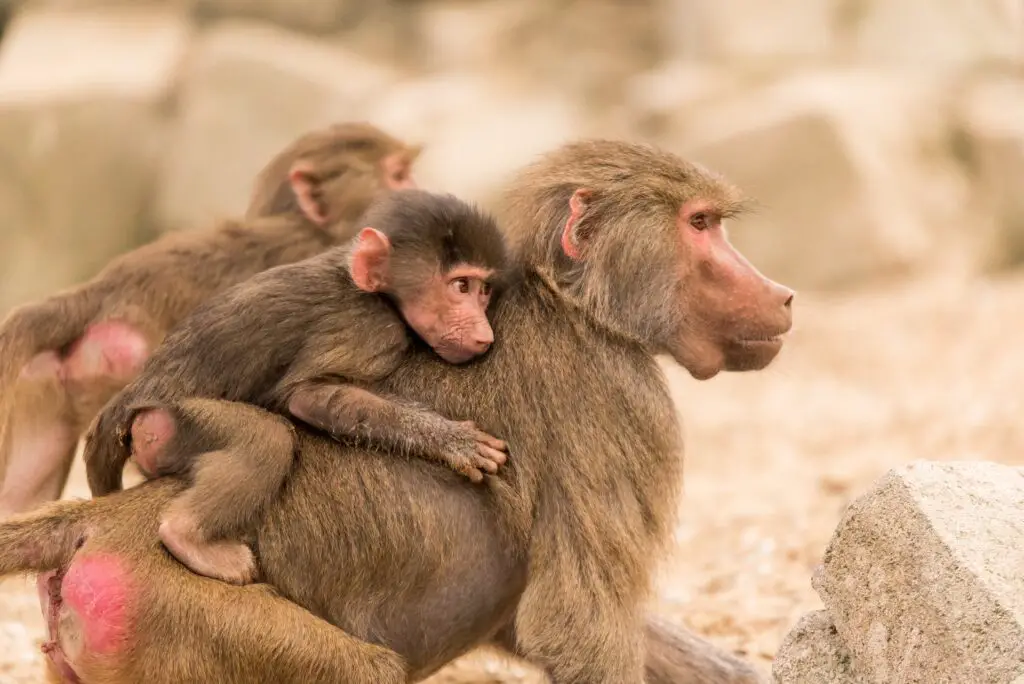
What eat Baboons? – Here is the list of 7 Natural Predators of Baboons
Baboons are eaten by other big predators like lions, cheetah, leopards, crocodiles, hyenas, wild dogs, etc. as prey.
Even humans are known to kill and feed upon baboons with their awesome hunting skills. Humans mostly hunt them during the nighttime as baboons’ night vision is very poor.
They are being preyed on when they are away from their troop, or if the troop is noticeably small then the other big cats like lions and leopards may take the chance to go after them for a kill.
Here is the list of 7 natural predators of Baboons, and these are the ones that are mentioned below like leopards, lions, hyenas, crocodiles, cheetahs, and humans are the most famous and well-known baboon predators.
Although, there are other predators like wild dogs, eagles, and even snakes that do feed upon baboons if they get a chance to opportunistically hunt one, however, it’s not so common for these animals to hunt baboons very often.
See the below list of the top 7 natural predators of baboons. Check these out:
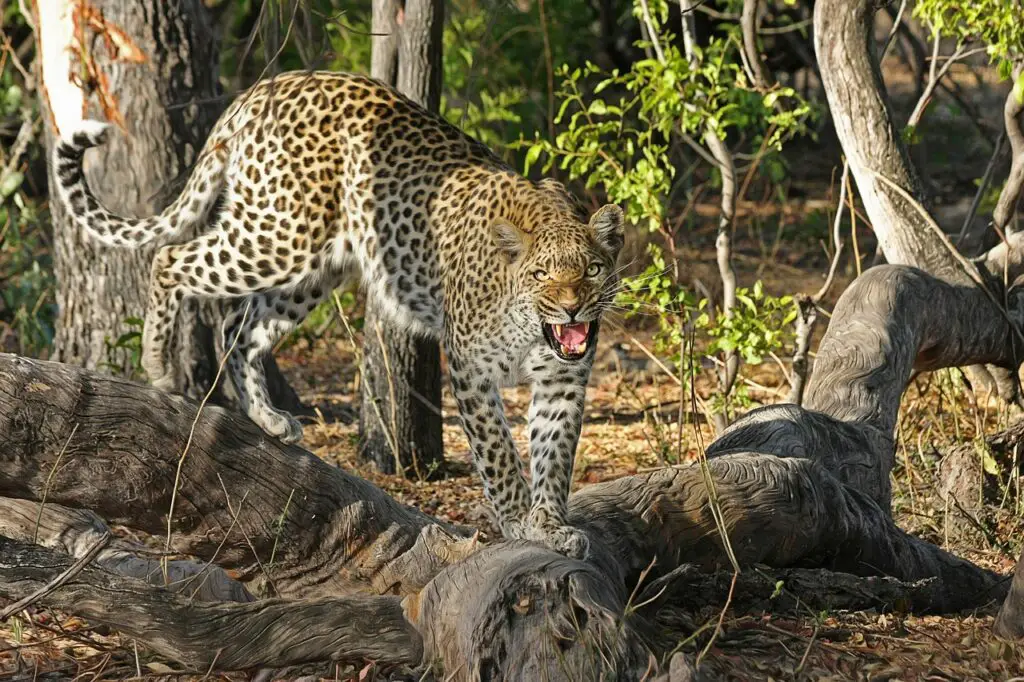
1. Leopards: They do basically hunt baboons at nighttime
Leopards are considered the primary predators of baboons, and they are also the main cause of adult mortality among baboons and the decrease in the baboon population as well.
Leopards basically target young and juvenile baboons during the nighttime. Baboons have poor night vision and so they can’t see any upcoming threat approaching them during the night.
Leopards have great night vision, and their ability to climb up the trees gives a great boost to their hunting skills. This is why leopards do opt for baboons as easy prey.
They may also opt to prey upon baboons during dusk and dawn time as well when it’s dim light everywhere.
During the daytime, it’s hard for them to make a kill as during that time of the day baboons are very active and they stay and forage in groups with a good day vision.
And, due to their large groups with many adult males, it’s not so easy for leopards to kill them in the daytime.
It has been also seen that adult male baboons can be very aggressive towards leopards in the daytime, but no such harassment has been seen at nighttime.
So, that’s why leopards are well-known for hunting baboons at nighttime.
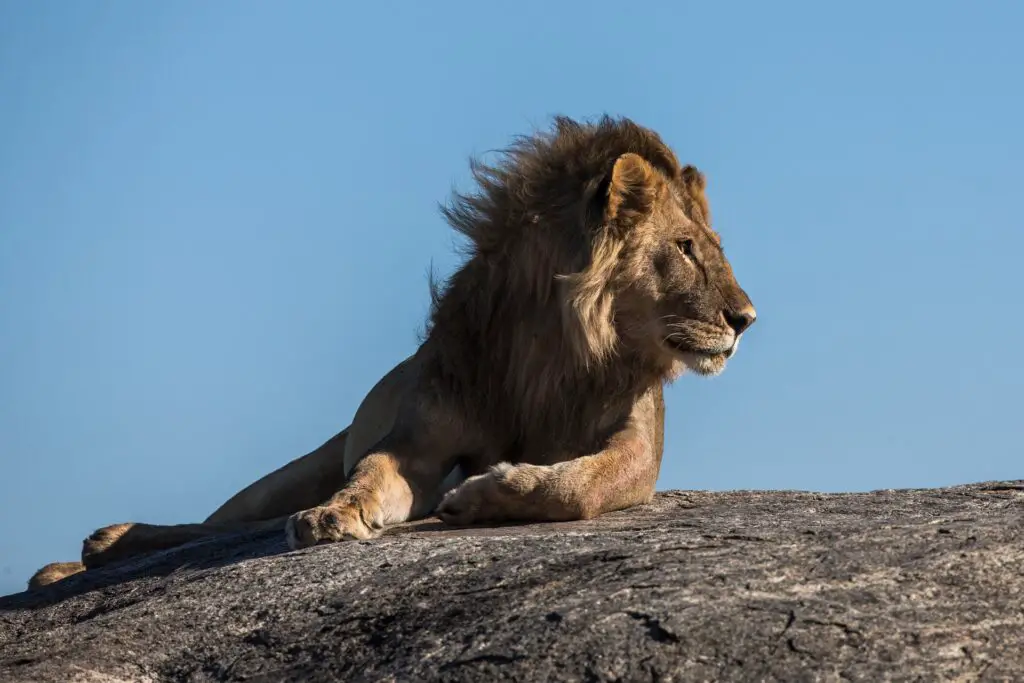
2. Lions: They can be mostly seen hunting during the daytime
Lions are the second most popular predator of baboons. They are mostly seen hunting for a baboon during the daytime when two of three lionesses will basically in a group surround the baboon and one of them will grab its neck into her jaw to kill it.
It will usually take hardly 2 minutes for a lioness to kill a baboon, but in the worst-case scenario is it likely that she may be wounded due to the baboon’s bite.
So yes, these ambush predators can work in a group to separate a baboon from its troop and then attack it.
And, when they are out for a hunt they are likely to prey upon a young and juvenile baboon as they can be easy prey as compared to the adult aggressive male baboons.
Unlike leopards, lions are not good climbers and so they can’t reach the top of the tree in order to kill a baboon.
And that’s also why many baboons can meet their end in terrifying nightly lion attacks if they are not up in the trees at nighttime.
And it’s also not so easy for these big cats to hunt baboons during the daytime due to their quick tree climbing adaptability. As lions are not good climbers to follow them up to the trees.
So, it has been seen that many of the lions won’t opt to attack a baboon if it is with a large troop with at least 10 powerful adult males for protection, or else the lion may itself be severely injured by the baboons.
It has been seen during the daytime that mother baboons with their clinging infants are easy prey to these ambush predators. This is because due to the increased weight after carrying the young ones the mother baboon is not able to climb up the tree very fast and so becomes easy prey for the lions.
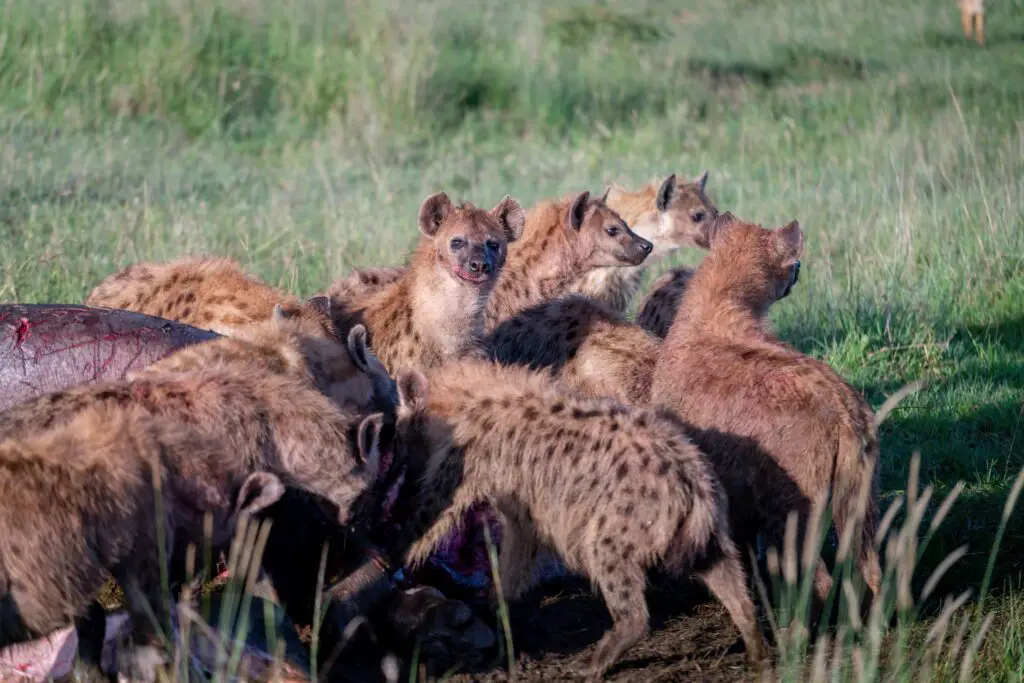
3. Spotted & Striped Hyenas: They mostly hunt in groups
Both Spotted Hyenas and Striped Hynes of the savannas are known to prey upon baboons when they get a chance.
Mostly they prefer baboons that have gone far away from their troops as an easy kill as there are very less chances that the baboons are to be protected by the troop.
They are more likely to attack a mother baboon carrying her infant, or a young juvenile baboon if they are hunting alone.
Although they prefer eating on large-sized animals, but at many times they are also seen feeding on medium-sized animals which they can easily tackle and overpower. Hyenas are just one of them.
Hyenas in packs of 7 to 8 members can lead to the baboon to separate for its troop, and then will attack it in packs and take down the prey by biting and dragging it to the ground.
Then are most likely to eat it alive without killing it. So, as such young and mother baboons with their infants become an easy prey to the hyenas.
It is to be noted here that hyenas are the third most significant predator of baboons on land (especially spotted hyenas), after leopards and lions.
Spotted hyenas are also popular for killing adult male baboons in the Savannas when they are in a group of 10 adult male hyenas.
Adult male hyenas are just strong and large enough predators for killing male baboons, and while doing so they may be injured by the large canines of the baboons. But, chances are very high that hyenas will win the battle if the troop is not there protecting the baboon.
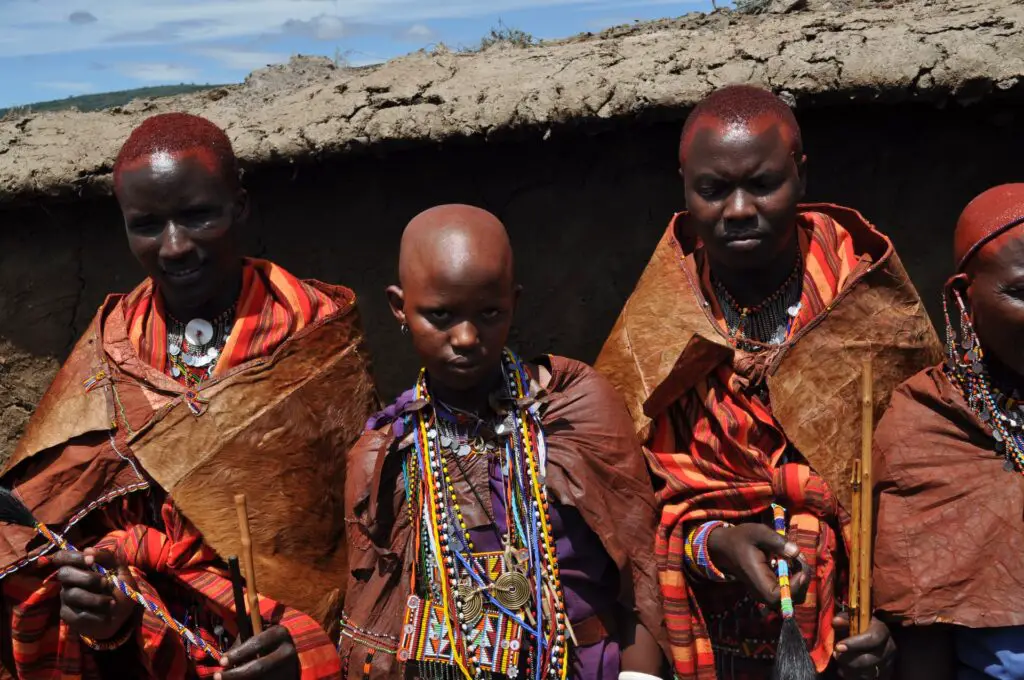
4. Humans: They go for hunting at nightime with tools like poisoned bows and arrows
Yes, mostly in Africa humans are also one of the top predators of Baboons. Many tribes of Africa mostly those from northern Tanzania like the Hadza tribe hunts for baboons.
They go hunting at night in groups to faraway places on foot. They search for signs and symbols in the darkness of the night and hunt their prey. Baboons are just one of their prey animals.
They use their primitive tools like poisoned bows and arrows to aim and kill a baboon that is sitting at a far spot on a tree or up above the rocks.
After the kill is made they carry it back to their homes and share the prey with their families and mates.
Before eating they do slice into a dead baboon as they prepare to butcher it for meat.
Meat is simply prepared by roasting it on fire after properly cleaning it and removing the unwanted body fur and gut portions of the body.
If we take the example of the Hazda people that it is to be noted that they not only hunt and feed upon Baboons, but they also prey upon Porcupines as well.

5. Cheetahs: They run after baboon in an incredibly fast pursuit and kill it
Cheetahs are rarely known for hunting large adult baboons as a large baboon is just enough to take down a Cheetah.
So, they prefer hunting for young small baboons if they make up their mind to kill one.
Cheetahs are one of the most well-known ambush predators. They will hide well, stalk, and will patiently wait for their prey like the baboon to climb down the tree, and then will run and leap over it in order to grab its throat into its mouth and break its windpipe with a very powerful bite leading to the prey’s suffocation and ultimately death.
Cheetahs are also known to run at a speed of 100 km per hour, which is faster than a baboon with a run speed of only 40 km per hour.
So, as they decide to pounce on a baboon, they will run after it in incredibly fast pursuit, and kill it.
Cheetah can also climb up the trees which give a big boost to their hunting abilities for capturing the young and juvenile baboons.
Cheetahs are also great nocturnal baboon hunters with extremely good night vision. While baboons have extremely poor night vision, only seeing pitch blackness.
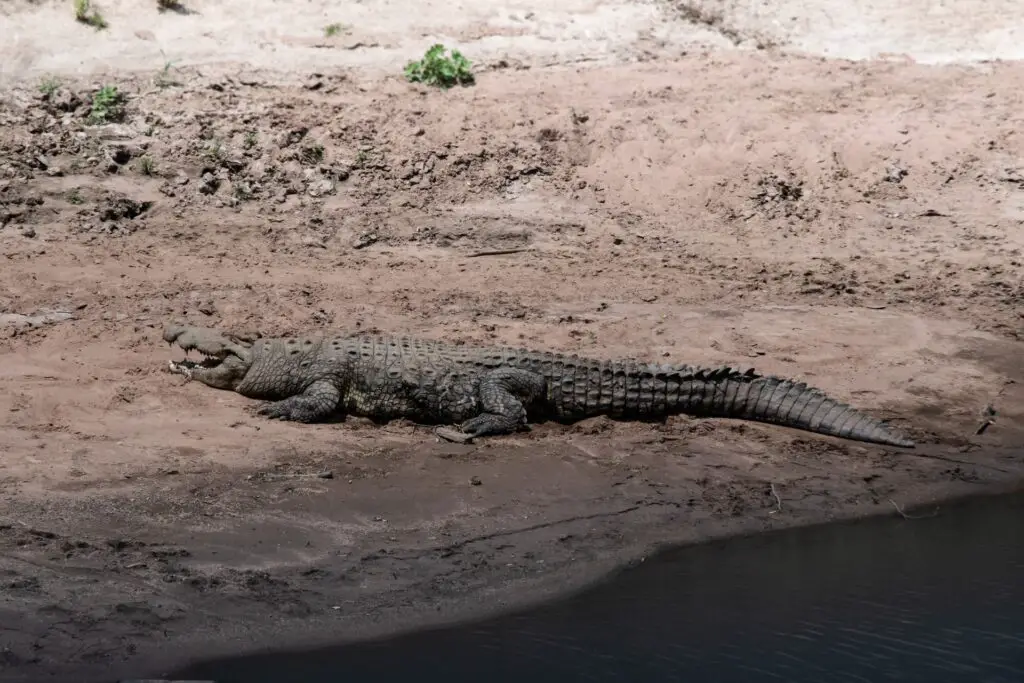
6. Nile Crocodiles: The apex hunters of freshwater habitats in Africa
Nile crocodiles have no natural predators and so they are the apex predators that are native to freshwater habitats in Africa.
They can eat almost anything they get including the baboons, in and nearby their water ranges like lakes, rivers, swamps, and marshlands.
It’s the time when baboons go near to the water bodies to drink water, they become the most vulnerable to being killed by the crocodiles.
Crocodiles are well-known for their instinct to silently swim close to the banks near to the prey animal when the prey is either drinking water or sitting close to the bank.
They remain fully submerged underneath the water, silently approach their prey, and then suddenly with a huge splash in a matter of milliseconds they will leap out of the water and will take their prey into their huge deadly jaws.
If somehow the crocodile is able to grip the baboon into its deadly jaws then chances are very very high that the baboon cannot defend itself anymore.
Yes, baboons can swim, but they are totally helpless and defenseless in the water against crocodile attacks. And whenever they are near or in the water, they are often killed and eaten by crocodiles.
The crocodile is likely to pull the baboon down to the water, drown it underneath, tear it apart, and feast on it.
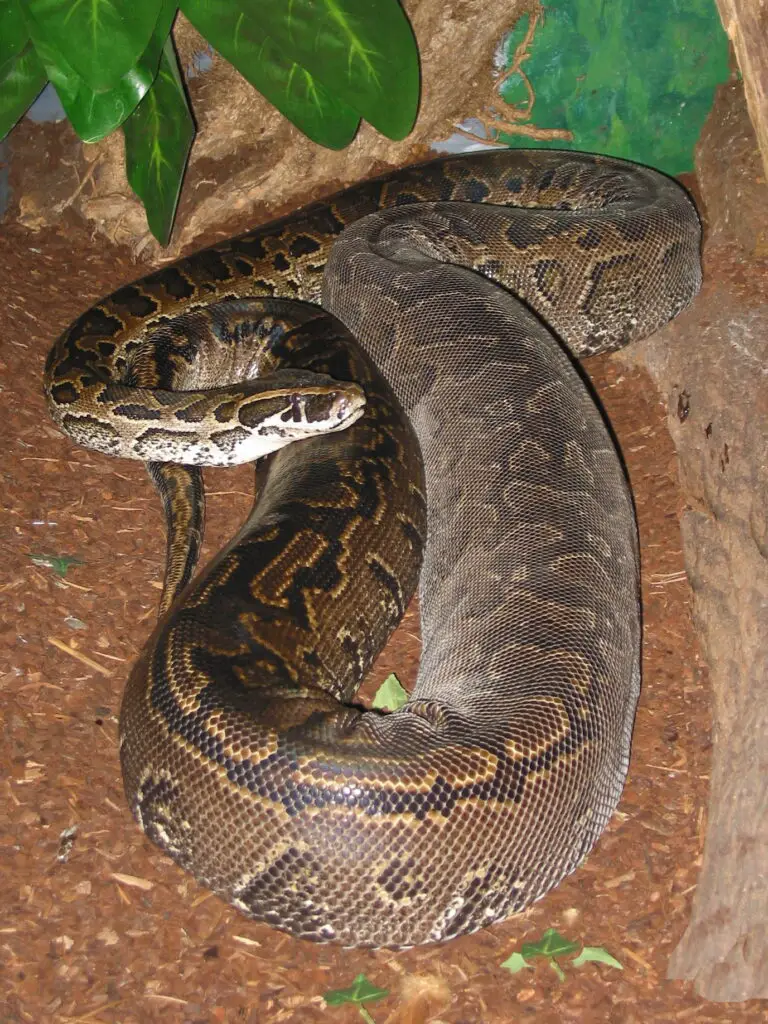
7. Snakes like Black Mamba, African Rock Python, etc.
Snakes like black mamba are known to kill small young baboons with their lethal cardiotoxin and neurotoxic venom and feast upon them.
The black mamba is born with two to three drops of venom per fang and due to this, they are one of the world’s deadliest snakes.
A black mamba can potentially take down 2 baboons given at least 10 drops of its lethal venom on each monkey.
The black mamba is feared by baboons because it is large and quick, and it possesses an extremely potent venom that kills most of them within minutes.
So, the next time you see a dead baboon on a tree do assume that it was likely killed due to a black mamba bite.
Another snake that can prey upon baboons is the African Rock Python. Like all pythons, the African rock python is non-venomous and kills by constriction.
African Rock Python can grow to a size of 22 feet or more and they do have a heavily built and robust body packed with extremely thick muscles. It is indeed Africa’s largest snake, and also one of the six largest snake species in the world.
It’s when baboons are foraging in the wild, amidst the bushes, chances are very high that a rock python may be sitting there waiting for a possible kill.
They attack in an ambush and catch their prey by wrapping themselves around their prey and crushing it. They kill by constriction meaning that they will wrap around the prey and will be squeezing tighter as the victim exhales.
This leads to the death of their prey due to severe suffocation, and then sooner or later it starts to swallow the whole animal.
Why are young and juvenile baboons mostly preyed on by predators?
Young and Juvenile baboons are mostly preyed on by predators because of their inability to defend themselves.
While adult baboons being mature and aggressive enough are not chosen by the majority of the predators for a hunt.
Adult baboons are known to fight back if there’s any upcoming risk to their mates and infants from big cat species like lions. They are ready to do or die during the fight with a lion, leopard, etc. in order to protect their troop.
Also that many of the predators won’t opt to attack a baboon if it is with a large troop with at least 10 powerful adult males for protection, or else the predator like the lion may itself be severely injured by the baboons.
So, they do avoid going after the adults and choose the young ones very often by fooling them to separate far from the troops.
Young and Juvenile baboons are hunted more often because they are less experienced, small-sized, know a little about their surroundings, can be easily threatened to get away from their troops, due to their less ability to climb up trees, and also that they don’t run so fast.
These all have made the young and juveniles baboons easy prey for their predators.
